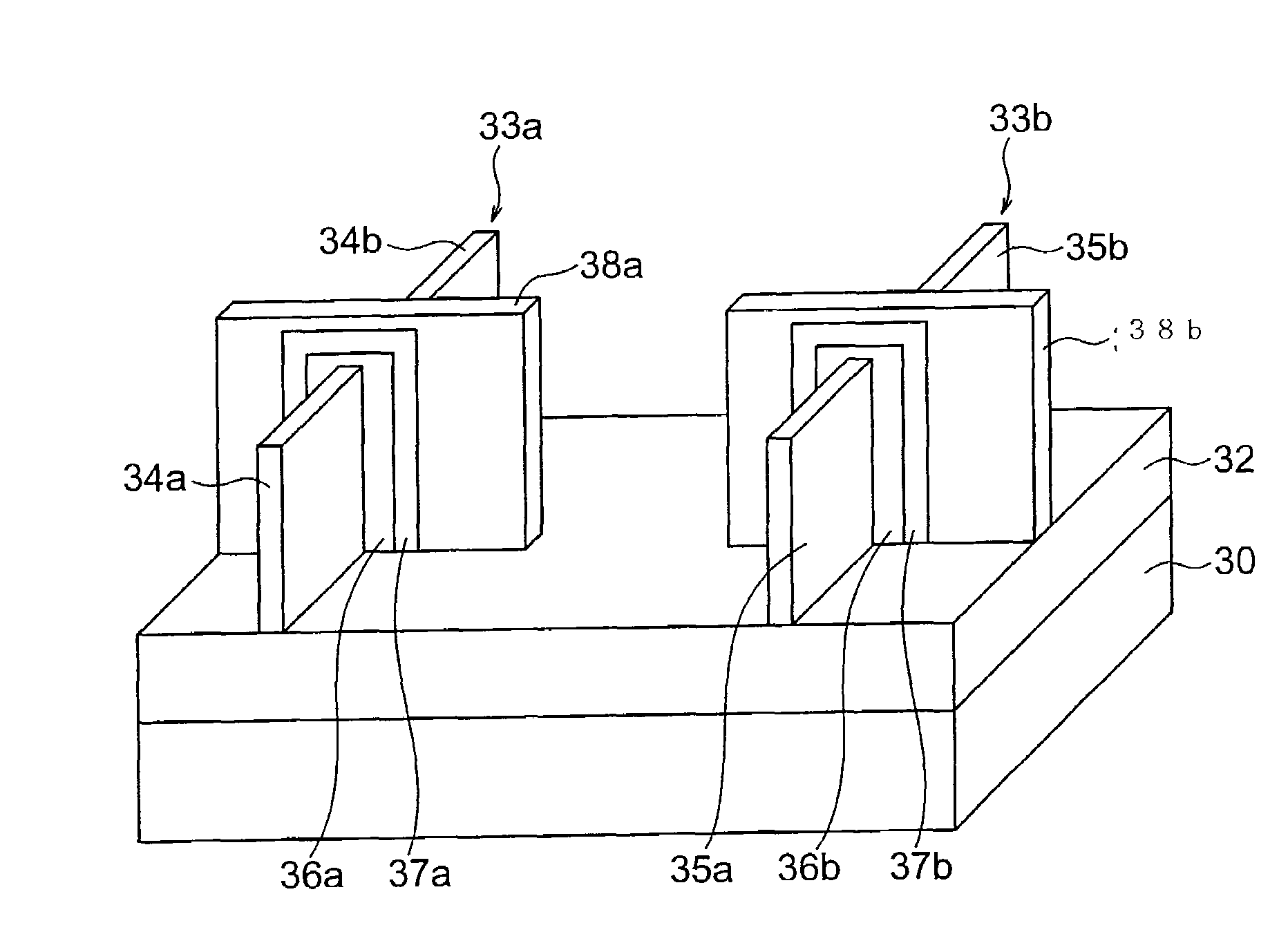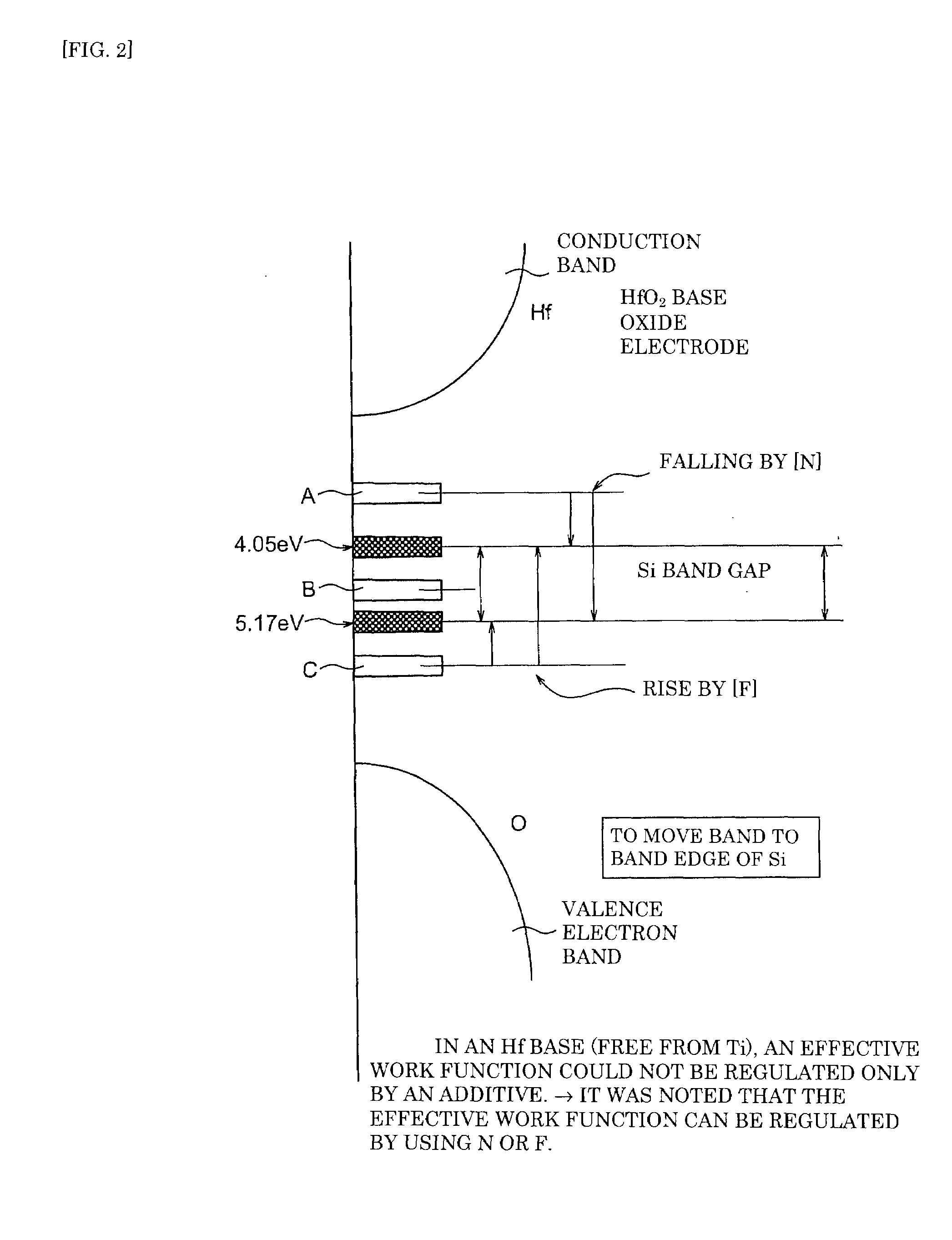Semiconductor device
- Summary
- Abstract
- Description
- Claims
- Application Information
AI Technical Summary
Benefits of technology
Problems solved by technology
Method used
Image
Examples
first embodiment
[0135]Next, a semiconductor device according to a first embodiment of the invention is described with reference to FIG. 13A to FIG. 13C.
[0136]The semiconductor device according to this embodiment includes an nMIS transistor and a pMIS transistor formed on a silicon substrate, and these MIS transistors are of the foregoing Type-A. Steps of manufacturing the semiconductor device of this embodiment are shown in FIG. 13A to FIG. 13C. The semiconductor according to this embodiment is formed in the following manner.
[0137]First of all FIG. 13A shows a device separating region 4 for separating a pMIS transistor forming region and an nMIS transistor forming region from each other on a semiconductor substrate, for example, a silicon substrate 2. This device separating region 4 is formed by means of, for example, an STI (shallow trench isolation) technology. This device separating region can also be formed by means of an LOCOS (local oxidation of silicon) technology.
[0138]Thereafter, a p-well ...
second embodiment
[0161]Next, a semiconductor device according to a second embodiment of the invention is described with reference to FIG. 18A to FIG. 18C.
[0162]A semiconductor device according to this embodiment includes an nMIS transistor and a pMIS transistor formed on a silicon substrate, and these MIS transistors are of the foregoing Type-B. Steps of manufacturing the semiconductor device of this embodiment are shown inFIG. 18A to FIG. 18C. The semiconductor according to this embodiment is formed in the following manner.
[0163]First of all, similar to the case of the first embodiment, a device separating region 4 is formed on a silicon substrate 2 (FIG. 18A). Thereafter, a p-well 6 is formed in the nMIS transistor forming region, and an n-well 8 is formed in the pMIS transistor forming region. Subsequently, in order to regulate the threshold voltage, impurities are introduced into the p-well 6 and the n-well 8.
[0164]Next, a gate dielectric film 40 is formed on the silicon substrate 2. This gate d...
third embodiment
[0177]Next, a semiconductor device according to a third embodiment of the invention is described with reference to FIG. 19A to FIG. 19C.
[0178]A semiconductor device according to this embodiment includes an nMIS transistor and a pMIS transistor on a silicon substrate, and these MIS transistors are of the foregoing Type-C. Steps of manufacturing the semiconductor device of this embodiment are shown in FIG. 19A to FIG. 19C. The semiconductor according to this embodiment is formed in the following manner.
[0179]First of all, similar to the first embodiment, a device separating region 4 is formed on a silicon substrate 2 (FIG. 19A). Thereafter, a p-well 6 is formed in the nMIS transistor forming region, and an n-well 8 is formed in the pMIS transistor forming region. Subsequently, in order to regulate the threshold voltage, impurities are introduced into the p-well 6 and the n-well 8.
[0180]Next, as shown in FIG. 19A, a gate dielectric film 50 is formed on the silicon substrate 2. This gat...
PUM
 Login to View More
Login to View More Abstract
Description
Claims
Application Information
 Login to View More
Login to View More - R&D
- Intellectual Property
- Life Sciences
- Materials
- Tech Scout
- Unparalleled Data Quality
- Higher Quality Content
- 60% Fewer Hallucinations
Browse by: Latest US Patents, China's latest patents, Technical Efficacy Thesaurus, Application Domain, Technology Topic, Popular Technical Reports.
© 2025 PatSnap. All rights reserved.Legal|Privacy policy|Modern Slavery Act Transparency Statement|Sitemap|About US| Contact US: help@patsnap.com



